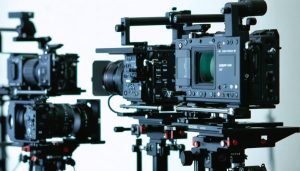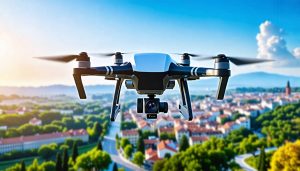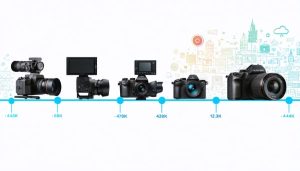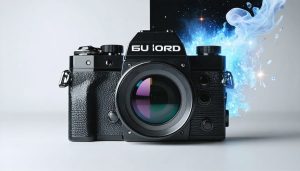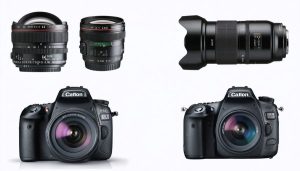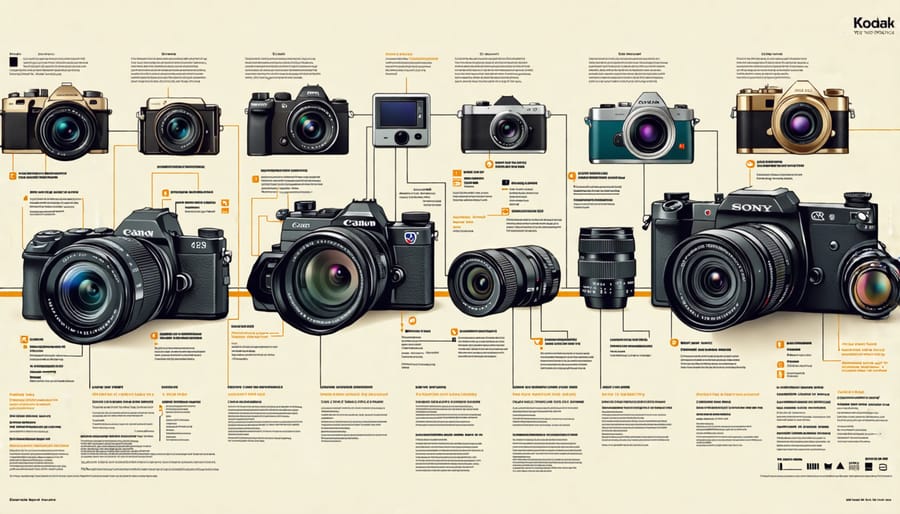
Explore pivotal moments in the fascinating journey of digital cameras by delving into the key technological advancements that revolutionized photography. Track the evolutionary path from the inception of the first digital camera by Kodak in 1975, which replaced film with digital sensors, to the widespread adoption of consumer-friendly models in the late 1990s and early 2000s. Discover the leap to smartphones integrating cameras, a game-changer that democratized photography and shifted market dynamics forever. Examine the continuous strive for higher resolution and better image quality, leading to today’s powerful DSLRs and mirrorless cameras that meet the demanding needs of both professionals and hobbyists. This chronological insight into the digital camera timeline will enhance your appreciation of the tools at photographers’ disposal today, providing context to the technical innovations that shape your creative journey.
The Dawn of Digital Imaging (1960s-1970s)
In the 1960s and 1970s, the foundation for digital imaging was laid through pioneering experiments and technological breakthroughs. One of the pivotal innovations was the development of the charge-coupled device (CCD) sensor, a game-changer for photography. Invented in 1969 by Willard Boyle and George E. Smith at Bell Labs, the CCD sensor revolutionized how visual information could be captured and converted into electronic data. Imagine the excitement in scientific circles as this tiny sensor opened up new possibilities for both photography and video recording.
During this era, researchers and engineers were deeply engaged in exploring the potential of electronic imaging systems. The National Aeronautics and Space Administration (NASA) also played a critical role, as they needed compact, reliable cameras for their space missions, leading to further advancements in digital imaging technology. These early digital systems had to be invented from scratch, often involving cumbersome equipment that hinted at the potential for future consumer applications.
By the late 1970s, digital imaging was still a nascent technology but had shown impressive promise. The collaboration between industries, from telecommunications to aerospace, underscored a shared vision: digital photography was on the horizon, ready to transform the way memories were captured and shared. While consumer digital cameras were yet to come, the seeds of innovation were planted, making way for the digital landscape we embrace today.
The 1980s: Birth of Commercial Digital Cameras
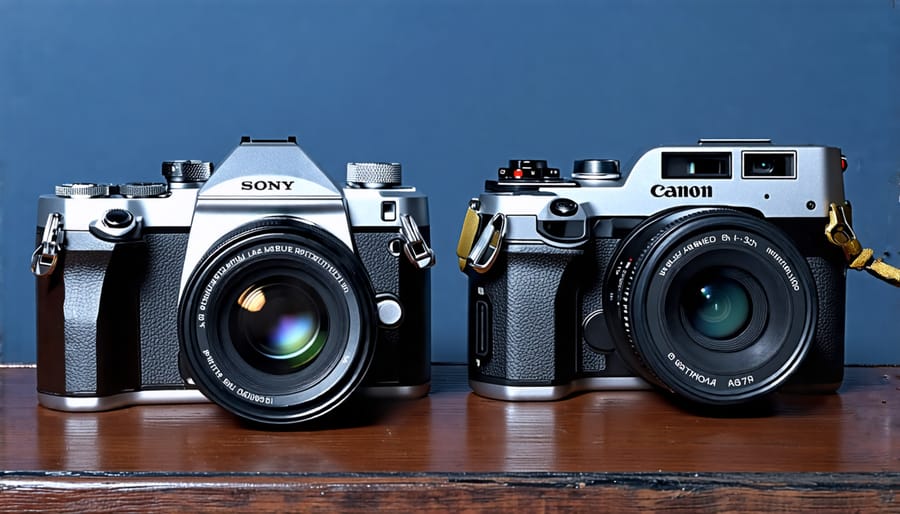
Sony Mavica
The Sony Mavica holds a special place in the history of digital cameras as one of the first electronic still cameras to make waves in the industry. Debuting in 1981, the Mavica—short for “Magnetic Video Camera”—captured images using a video floppy disk, a novel concept at the time. While it didn’t produce true digital photos as we know today, it was pivotal in transitioning from analog to digital photography. Its ability to instantly display images on a television screen was revolutionary, giving users a glimpse into a future where real-time image review and editing would become integral parts of the photographic experience.
Canon RC-701
In 1986, Canon shook the photography world with the introduction of the RC-701, a trailblazer for digital camera technology. Dubbed an “electronic still video camera,” the RC-701 was a bold leap toward digital photography for professionals at the time. Imagine photographers at the Los Angeles Olympics capturing images that could be quickly shown on a TV screen—this was revolutionary.
The RC-701 played a vital role in professional photography by offering an alternative to traditional film. Its ability to snap up to 50 images on a 2-inch floppy diskette meant photographers could now review, select, and share their best shots on the spot, dramatically speeding up workflows. This was particularly useful for photojournalists, who could transmit images quickly—an essential feature in an era when time was synonymous with impact.
Despite its bulkiness and hefty price tag, the RC-701 set the stage for future digital innovations. It symbolized a transition, paving the way for more accessible digital cameras and emphasizing the potential of electronic imaging in professional settings.
The 1990s: Rise of Consumer Digital Cameras
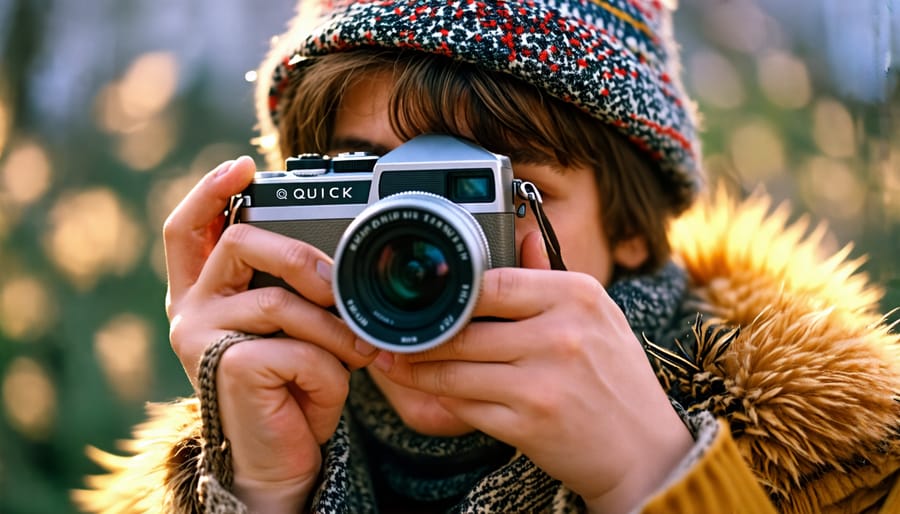
Apple QuickTake
In the mid-1990s, Apple’s foray into the world of digital photography with the QuickTake camera marked a pivotal moment in the evolution of consumer technology. Launched in 1994, the Apple QuickTake was one of the first digital cameras accessible to everyday users, offering a tantalizing glimpse into the future of photography. Imagine a time when capturing a moment didn’t immediately require film and development—it was a radical idea that changed the landscape of personal photography.
Aimed squarely at the consumer market, the QuickTake cameras were user-friendly and designed to work seamlessly with Apple computers. They allowed users to capture digital images with relative ease, providing a bridge between traditional film and digital formats. Despite their early limitations, such as low resolution by today’s standards, they helped demystify digital photography for many people. The QuickTake proved that digital photography could be accessible and enjoyable, sparking interest and paving the way for future innovations that are integral to photography today.
Kodak’s Influence
In the realm of digital photography, Kodak played a pivotal role during its golden years, bringing innovation that forever changed the industry. The company’s journey into digital began in the mid-1970s with the development of the first digital camera prototype. However, it was in the 1990s and early 2000s that Kodak’s influence truly accelerated. This was a time when Kodak focused on making digital photography accessible and user-friendly, thus democratizing the art form. Their EasyShare cameras, launched in 2001, were among the first to offer seamless photo sharing, an innovation that captivated both hobbyists and professionals alike.
Kodak’s strategy was to blend traditional photography with digital advancements, catering to long-time film enthusiasts while inviting newcomers to explore the digital frontier. They invested heavily in digital imaging patents and technologies, which remained highly profitable even as they navigated the challenging transition from film. Despite eventually losing ground to other companies, Kodak’s early digital pursuits laid the groundwork for today’s photography, inspiring countless innovations and solidifying their legacy in the digital camera timeline.
The 2000s: Digital Cameras Go Mainstream
Leap to DSLRs
The leap to DSLRs marked a transformative moment in the digital camera timeline, elevating image quality to new heights and capturing the imagination of both amateur and professional photographers. DSLRs, or Digital Single-Lens Reflex cameras, combine the interchangeable lenses and optical viewfinder of traditional film SLRs with digital technology, offering a bridge between old-school photography and the modern age. This fusion provided unbeatable control over the creative process, with manual settings that allowed photographers to adjust everything from shutter speed to ISO settings with precision.
For hobbyists, DSLRs opened up a world of possibilities, making high-quality photography more accessible than ever. Enthusiasts could explore different types of lenses and shooting modes, while professionals appreciated the high-resolution sensors and robust performance in low light conditions. Additionally, DSLRs facilitated experimentation with depth of field and motion capture, skills that are crucial for advancing in photography. The popularity and versatility of these cameras created a community of users dedicated to mastering the art, ensuring DSLRs remain a staple in the journey of photographic exploration and skill development.
Emergence of Mirrorless Cameras
In recent years, mirrorless cameras have revolutionized the photography landscape, blending the best of compact convenience and professional capability. Emerging in the late 2000s, these cameras ditched the traditional mirror mechanism found in DSLRs, leading to lightweight, portable designs without sacrificing quality. Enthusiast and professional photographers alike appreciated the ability to preview depth of field and exposure in real-time, thanks to electronic viewfinders.
Consider the example of travel photography, where every ounce counts. Professionals found that using a mirrorless camera meant they’re less encumbered by bulky gear, allowing them to snap spontaneous, high-quality shots with ease.
Moreover, the influx of advanced features, such as on-sensor phase detection and improved autofocus systems, bridged the gap between DSLRs and their more diminutive counterparts. This technological leap has democratized photographic practices, allowing hobbyists and experts to create vibrant, detailed images with a level of immediacy previously unimaginable. For those eager to embrace both the technical and creative worlds of photography, mirrorless cameras have indeed become indispensable tools.
2010s to Present: Integrating Smart Technology
As the world embraced a more connected lifestyle in the 2010s, digital cameras underwent a transformation that integrated smart technology in ways previously imagined only in science fiction. The rise of Wi-Fi connectivity was a game changer, allowing photographers to effortlessly transfer images from their cameras to devices or cloud storage without the hassle of cables. This era also saw the advent of cameras with built-in GPS capabilities, enabling photographers to geotag their photos and track their photographic journeys around the globe.
Smartphone compatibility heralded another revolution in the photography world. With dedicated apps, users could control their cameras remotely, adjusting settings and triggering the shutter directly from their smartphones. This not only enhanced the versatility of shooting in difficult positions but also fostered greater creativity by allowing photographers to explore angles and perspectives once deemed too complex or cumbersome.
Let’s not forget the wave of innovation sparked by incorporating AI photography features, which began to distinguish the smart cameras of this era. From scene recognition to real-time subject tracking, AI integration facilitated capturing the perfect shot more seamlessly than ever. Real-world examples, like cameras with eye-tracking autofocus systems, underscored this step forward, catering to both amateur enthusiasts and seasoned professionals seeking efficiency and precision.
To navigate this smart technology landscape, practical advice abounds. When purchasing a new camera, ensure it meets your connectivity needs, whether it be through Wi-Fi, Bluetooth, or innovative app ecosystems. Smart functionality isn’t just about convenience; it’s about expanding the photographer’s toolkit, allowing us to re-imagine and re-engage with the art form at every click.
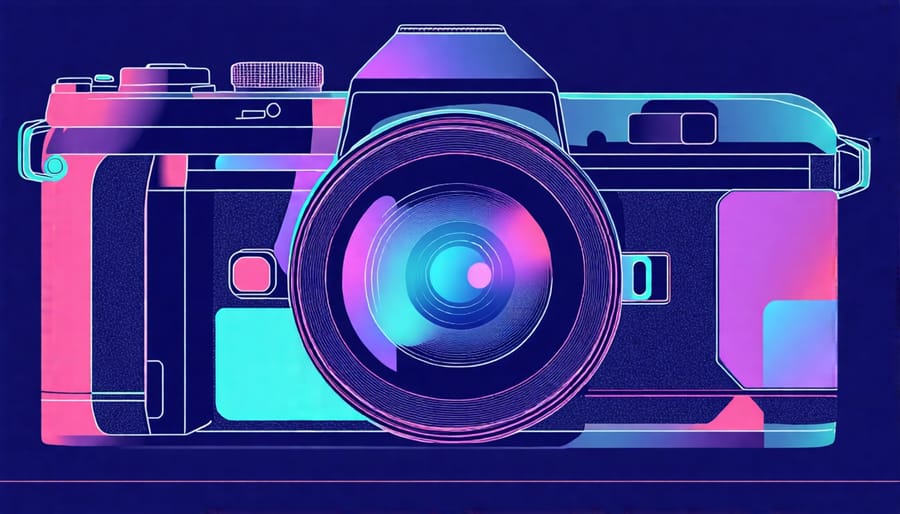
Future Trends and Innovations
As the digital camera industry evolves, we’re on the brink of some thrilling advancements. Imagine a future where AI doesn’t just assist but becomes an integral partner in creating stunning photographs. AI-powered cameras are becoming adept at recognizing and adjusting settings for diverse scenes, potentially making complex manual adjustments a thing of the past. This technology is paving the way for more accessible photography, especially for beginners contemplating buying the perfect camera.
Computational photography, already popular in smartphones, is making its way into digital cameras, enhancing what these devices can achieve. It combines multiple images to produce a single photo, balancing highlights, shadows, and colors, resulting in immensely detailed pictures. Additionally, the incorporation of augmented reality in viewfinders could soon allow photographers to visualize how filters or effects will alter images in real-time before even taking the shot. As these technologies blend, they underscore a future where creativity and technicality unite like never before.
Conclusion
From the humble beginnings of digital imaging in the 1970s to the sophisticated devices we hold today, the evolution of digital cameras has revolutionized photography. Milestones like the invention of the first digital camera in 1975, the integration of digital features in the 1990s, and the explosion of smartphone cameras in the 2000s, have transformed how we capture and share images. These technological advancements have democratized photography, making it accessible to everyone and fostering a vibrant culture of visual storytelling. As a result, digital cameras have expanded the boundaries of creative expression, profoundly influencing both amateur and professional photographers worldwide.

